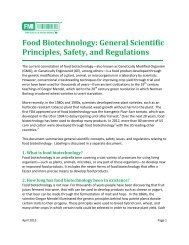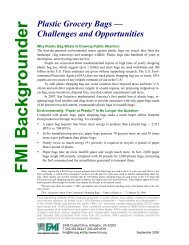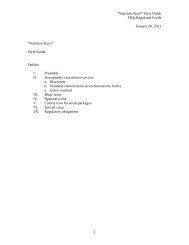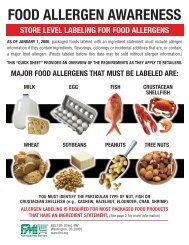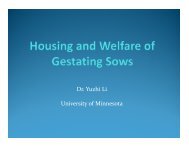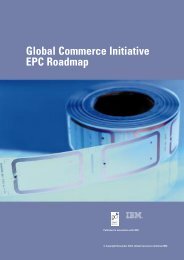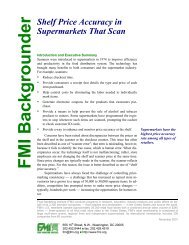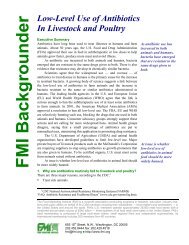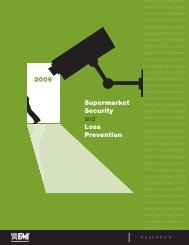Consumer Shopping Habits for Wellness and Environmentally ...
Consumer Shopping Habits for Wellness and Environmentally ...
Consumer Shopping Habits for Wellness and Environmentally ...
Create successful ePaper yourself
Turn your PDF publications into a flip-book with our unique Google optimized e-Paper software.
We also examine toxicity concerns among six different product categories, to better underst<strong>and</strong><br />
consumer concerns about hazardous ingredients or materials. The toxicity of cleaning products is<br />
of most concern with about half of all consumers (49%). This is not surprising given our qualitative<br />
findings, which showed a notable interest in ―less chemical‖ cleaners extending across a very large<br />
swath of consumers <strong>and</strong> natural home cleaning as a strong (<strong>and</strong> early) H+W gateway.<br />
Figure 35 – Concerns about Hazardous Ingredients or Materials used in Product<br />
Cleaning products<br />
49%<br />
Toys<br />
15%<br />
Body care products<br />
13%<br />
Pet goods<br />
9%<br />
Sporting goods<br />
1%<br />
None of these<br />
13%<br />
Q23: “Which one of the following product categories are you MOST CONCERNED about the amount of hazardous ingredients or<br />
materials used?” | Base: Primary household shoppers (n=2176). Hobbies <strong>and</strong> crafts have less than 1% concerned level. | Source:<br />
GMDC 2009 Survey, Mar. 2009.<br />
Purchase Decision Criteria Evolve Away from Traditional Considerations of<br />
Price/Value <strong>and</strong> Convenience<br />
As consumers evolve away from the Periphery of the H+W World, purchase decision criteria<br />
increasingly move away from the traditional hallmarks of American consumerism, namely value (or<br />
price) <strong>and</strong> convenience, though, importantly those dimensions do maintain some salience at the<br />
Mid-level. As consumers move into <strong>and</strong> through the Mid-level, they become more concerned with<br />
quality distinctions (e.g. ―organic‖) in products, as in<strong>for</strong>med by increasing levels of knowledge <strong>and</strong> a<br />
thirst <strong>for</strong> new <strong>and</strong> interesting H+W-related experiences. At the Core, consumers structure purchases<br />
in H+W product categories in often absolute <strong>and</strong> even ideological terms, desiring a high level of<br />
product (<strong>and</strong> retailer) authenticity. In addition, in more developed areas of the Mid-level <strong>and</strong> in the<br />
Core, ideas of sustainability strongly in<strong>for</strong>m some purchases. These patterns essentially line up<br />
with the ―Dimensions of Consumption‖ outlined in Chapter 2.<br />
Price Sensitivity Varies by Category<br />
Pricing concerns typically vary among different product categories. <strong>Consumer</strong>s were asked to rank<br />
the top five product categories where pricing is of most concern. On the following chart, we note<br />
that laundry detergent is chosen by nearly half (46%) of all consumers. Among the 28 different<br />
product categories analyzed, laundry detergent is one of the more "big ticket" items among general<br />
household goods with some costing over $10, so consumers have more pricing concerns because of<br />
62




